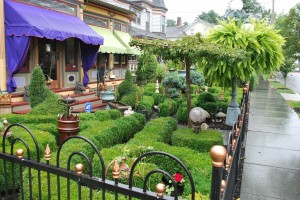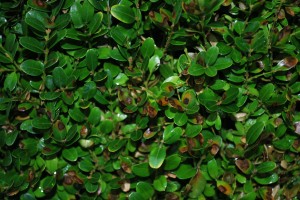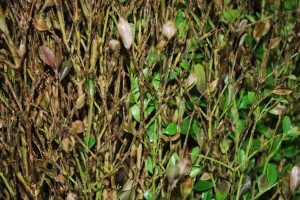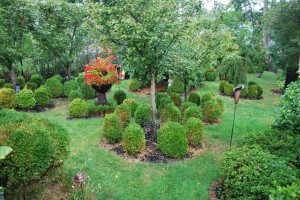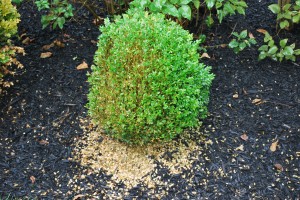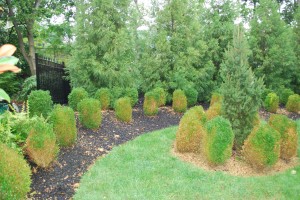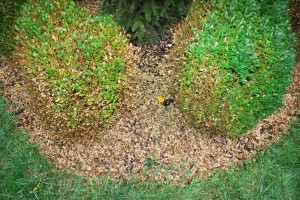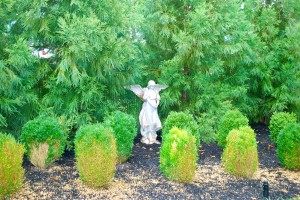I heard through the grapevine about a site with some dead boxwoods, so I went to take a look and here is what I saw.
My first impression was of a meticulously restored and cared for Victorian House – no detail missed, a perfect paint job, gargoyles and other wild sculptures, and a most interesting planting of box. A closer look, however, revealed the nature of my visit.
And then I went around back. RUH ROH! Boxwood Blight! Cape May perfect suddenly turned into classic Addams Family! Morticia would be proud, or maybe Quentin Tarantino…
I can’t describe to you the plant pathology glow that built inside me as I walked the site. Really, I showed genuine concern about the problem with the client, but WOW, this is why I love my job.
More than anything else, I wanted to share these photos with you, so you can get a feel for the destructive potential of this boxwood blight disease. Boxwoods have been established on this site for nearly 20 years. Last fall, 70 more were brought in to complete the landscape design. All was well until mid-August when the heat started to break. A couple failed at that point and it has been downhill since.
Reports on fungal biology indicate that the fungus Cylindrocladium pseudonaviculatum grows at temperatures between 41ºF and 86ºF. The pathogen begins to die at 91ºF and has optimal growth between 64ºF and 77ºF – pretty much where we have been over the last month. Perfect temperatures plus a little rain, some high humidity in the form of poor air circulation (notice all the trees), some overhead irrigation (notice the pop-up head in the last photo), and off to the races we went.
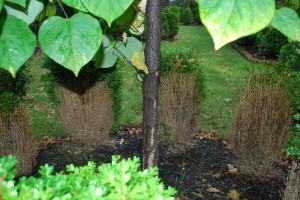
Boxwood blight. Note the disease is more severe on the insides of the tree rings where it rarely dries out. Photo: Richard Buckley, Rutgers PDL
Of course, our immediate recommendations to this client were to eradicate the infected plant material. Which, of course, includes all the fallen leaves. We prefer to burn these guys, but in a small town, where would you? Double bagged and landfilled is the next best option. And be sure to get all the leaves! If you are a landscape professional and are charged with dead plant removal, maybe you should wash down the truck that hauled them away too, particularly if you are going to use the same truck to haul healthy boxes to another site.
Folks, this is not an isolated incident. We are getting boxwood blight samples in the laboratory every day from both production and retail nurseries as well as from residential landscapes. Better say your prayers, because this is one tough customer.
For up-to-date information on boxwood blight, visit here.
